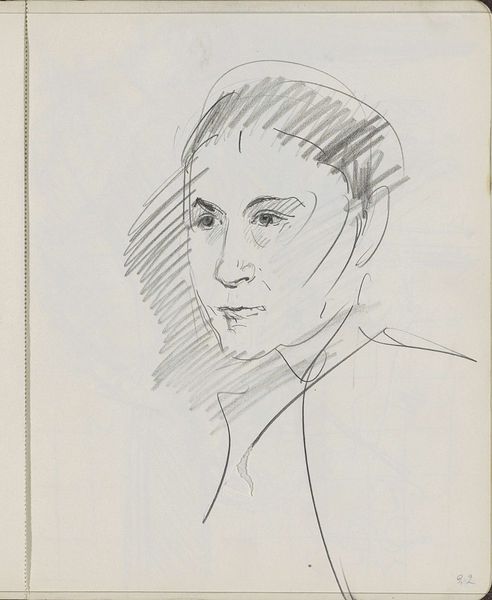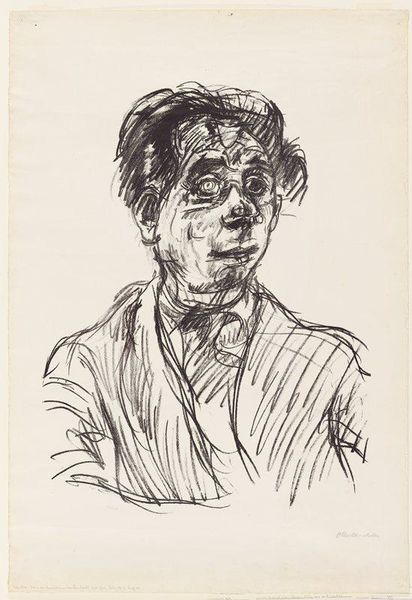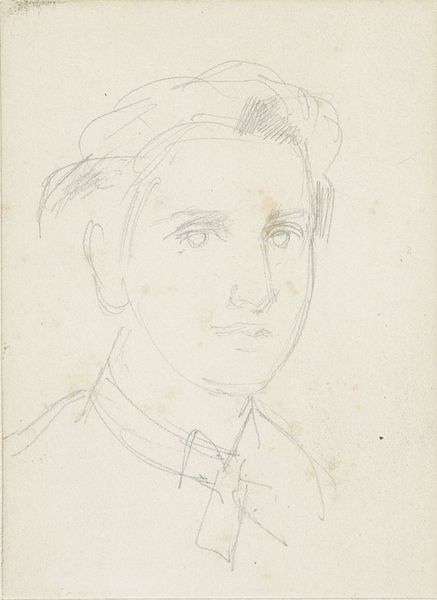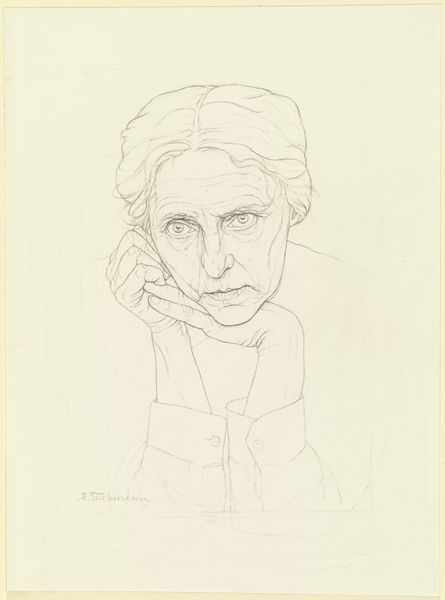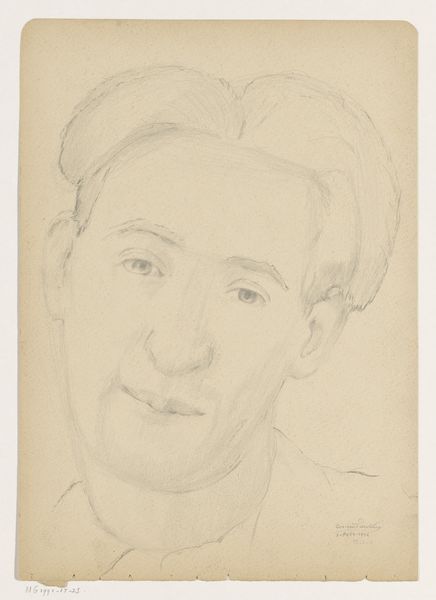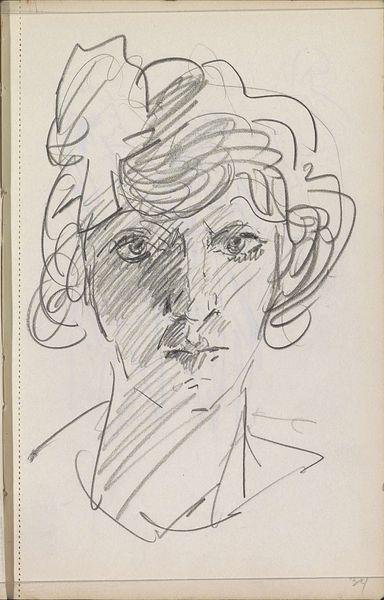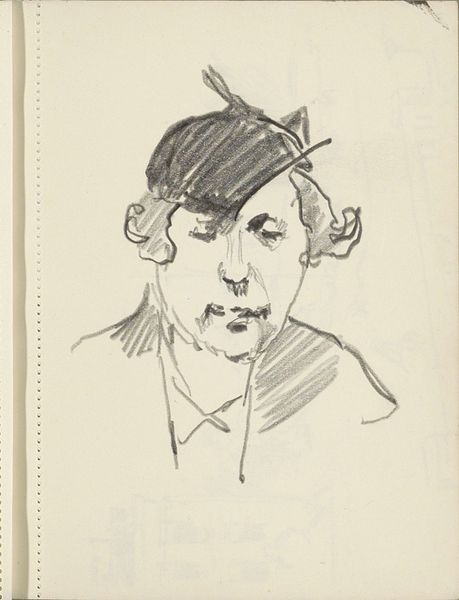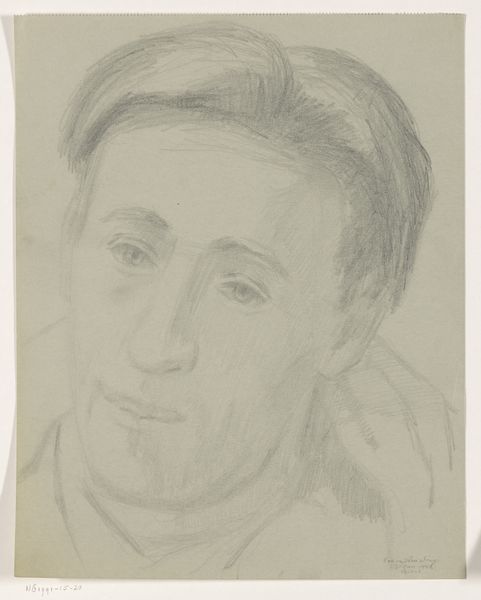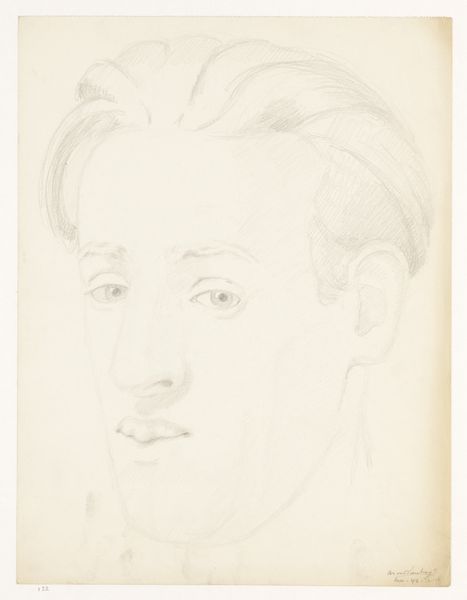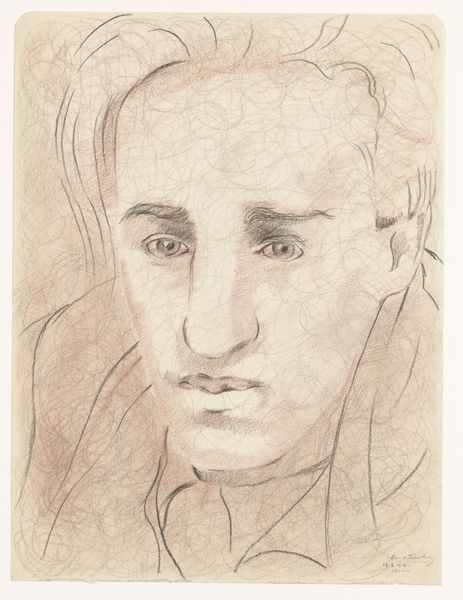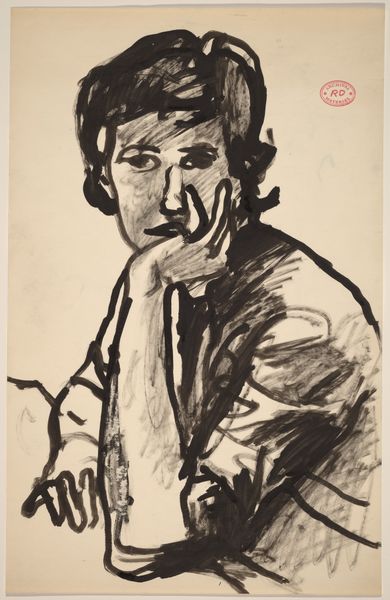
Dimensions: height 421 mm, width 268 mm
Copyright: Rijks Museum: Open Domain
Albert Neuhuys made this self-portrait drawing with pen, graphite, and brush in the Netherlands. The late 19th century was a time when Dutch artists were re-engaging with their national identity, often focusing on rural life. Neuhuys himself was a prominent figure in the Hague School, which emphasized realism and the everyday experiences of ordinary people. Given this context, a self-portrait serves as an interesting statement. It reflects the artist's own place in this cultural movement, as well as the artist's sense of self within that broader social landscape. This image creates meaning through its use of light and shadow, as well as the artist's direct gaze. Neuhuys seems to confront the viewer. It is a sober and earnest presentation of the artist's self. Was this a conscious decision to present himself as a serious and dedicated artist? To understand the context better, we can turn to archival materials, exhibition catalogs, and period publications. The meaning of art depends on its social and institutional context.
Comments
No comments
Be the first to comment and join the conversation on the ultimate creative platform.
